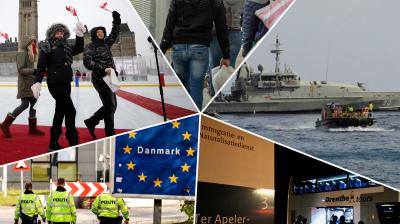In Search of Control | Australia
Australia’s path to maintaining sovereign borders
Australia's Operation Sovereign Borders (OSB) has increasingly been referred to as an example of more restrictive asylum policies in Europe. Throughout this operation, Australia has intercepted and turned back boats carrying asylum seekers – whom Australia calls ‘unauthorised maritime arrivals’ (UMAs) – to either their country of origin or their country of arrival, often through (sometimes implicit) agreements with surrounding countries like Sri Lanka and Indonesia. Anyone who still arrives in Australian territory without a valid visa is put in immigration detention onshore or is placed in offshore processing centres in Nauru or Papua New Guinea (PNG). Despite the recent renewal of the three-year contract with Nauru, valued at A$420 million, to maintain the possibility of offshore detention and processing until at least 2025, the preceding nine years had witnessed no asylum seekers being sent to Nauru. During this period, the majority of asylum seekers who did stay there were either resettled in the United States, returned to Australia, or returned to their country of origin. In October 2023, however, the Australian Border Force confirmed that 11 people have been sent offshore to Nauru, because they could not be sent back safely, aligning with the government’s narrative that offshore processing remains an integral part of OSB.
About the project
This report is part of the project 'In Search of Control: International comparative research on (extra-)territorial access to asylum and humanitarian protection'. The purpose of this comparative research project, led by the Clingendael Institute, was to collect existing knowledge about the asylum systems of Australia, Canada, Denmark, the Netherlands, and the United States, and to complement this with an analysis of national legislation, policy, and implementation practices, focussing on access to (extra-)territorial asylum. While there are overlaps, each of the asylum and refugee protection systems in the research project operates in very different geographical situations and political contexts. Find the other country reports here.







